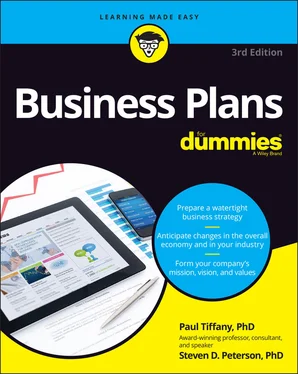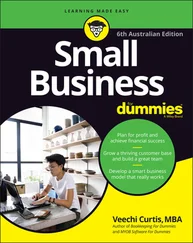“In fiscal 2017, we set a three-year goal for 30% of our revenue to come from software, and while we achieved 29% in fiscal 2020, we did achieve 31% in the fourth quarter. In fiscal 2020, 74% of our software revenue was sold as subscription, exceeding our target of 66%. We also delivered 51% of our revenue from software and services in fiscal 2020, exceeding our target of 50%.”
The firm continues to set specific performance goals that link to purpose, and it conveys results with a transparency visible to all. To Cisco we say, Bravo!
Certain industries seem to remain tortoise-like in their pace, at least at some level of analysis. Small boutique furniture makers in the United States, for example, still operate today much the same as they did 50 years ago, with perhaps the addition of an Internet address. Technological change was minimal at best. Consumer tastes for these products have also changed slowly, and the types of materials used and levels of craftsmanship required have stayed pretty much the same. But while the internal dynamics of furniture making might not have shifted too dramatically, the globalization of markets has utterly and totally disrupted the domestic American industry. Reduced transoceanic shipping costs combined with the communications revolution wrought by the Internet upended the industry, as suppliers from Asia entered the market with look-alike products offered at considerably lower price. High Point, North Carolina, was proudly referred to as “the furniture capital of the world,” but today many of the large, branded firms that operated there no longer exist; next time you’re out shopping for a new sofa or coffee table, try to find something that says “Made in the USA.” In the case of this industry, incumbents might be most comfortable devising a business plan for three years or so at most.
Change, however, is perhaps a daily constant for many other industries. Take traditional “bricks-and-mortar” retailing — that is, a physical store where the customer walks in, wanders the aisles and browses the shelves, and is served by a live salesperson. But then came the advent of online suppliers like Amazon.com. At first they took root slowly (the sorcerer from Seattle first entered into the retail book selling industry way back in 1994). But today almost anyone who sells something in a physical store is subject to disruption. In the past, retailers were judged on four key variables: breadth of available product line; convenience of purchasing; trust (which encompassed perceptions of the firm’s customer service such as returns policy); and price. E-commerce suppliers quickly overtook traditional stores on three of the four, and when they began to build trust through brand recognition, customer-centric policies like no-hassle free return of goods, and ready access to instant chat with a real person, the traditional businesses were doomed. Clearly, you snooze, you lose in this industry today. Perhaps a one-year time frame for planning, which in fact is little more than the annual budgetary exercise, is appropriate for firms in the retail space who have not yet gone digital — and even that might be too long.
 When dealing with change, business planners have to maintain a balancing act between moving too quickly and not quickly enough. You have to set business goals and follow them up with verifiable objectives, basing time frames on your comfort level with what you expect to happen down the road. Build in some flexibility so you can revisit your goals and objectives and account for the changes you see; perhaps lease equipment rather than make an outright purchase or hire temps until you get your footings. Stay agile. And stay tuned. We discuss this topic more thoroughly in Chapter 13.
When dealing with change, business planners have to maintain a balancing act between moving too quickly and not quickly enough. You have to set business goals and follow them up with verifiable objectives, basing time frames on your comfort level with what you expect to happen down the road. Build in some flexibility so you can revisit your goals and objectives and account for the changes you see; perhaps lease equipment rather than make an outright purchase or hire temps until you get your footings. Stay agile. And stay tuned. We discuss this topic more thoroughly in Chapter 13.
Part 2
Describing Your Marketplace
IN THIS PART …
We help you scan the business environment and determine the best fit for your business. We take a hard look at your industry to see what it takes for you to be successful, and we get you prepared for business opportunities and threats that come your way.
We look at how you can divide your customers into groups with similar needs and wants so that you find it easier to identify and communicate with them.
We spend time talking about ways to get better acquainted with your customers — figuring out what motivates them, how they make choices, and what makes them keep coming back.
Finally, we talk about your competitors — who they are, what they’re up to, and how you can plan to compete against them and win.
Конец ознакомительного фрагмента.
Текст предоставлен ООО «ЛитРес».
Прочитайте эту книгу целиком, купив полную легальную версию на ЛитРес.
Безопасно оплатить книгу можно банковской картой Visa, MasterCard, Maestro, со счета мобильного телефона, с платежного терминала, в салоне МТС или Связной, через PayPal, WebMoney, Яндекс.Деньги, QIWI Кошелек, бонусными картами или другим удобным Вам способом.

 When dealing with change, business planners have to maintain a balancing act between moving too quickly and not quickly enough. You have to set business goals and follow them up with verifiable objectives, basing time frames on your comfort level with what you expect to happen down the road. Build in some flexibility so you can revisit your goals and objectives and account for the changes you see; perhaps lease equipment rather than make an outright purchase or hire temps until you get your footings. Stay agile. And stay tuned. We discuss this topic more thoroughly in Chapter 13.
When dealing with change, business planners have to maintain a balancing act between moving too quickly and not quickly enough. You have to set business goals and follow them up with verifiable objectives, basing time frames on your comfort level with what you expect to happen down the road. Build in some flexibility so you can revisit your goals and objectives and account for the changes you see; perhaps lease equipment rather than make an outright purchase or hire temps until you get your footings. Stay agile. And stay tuned. We discuss this topic more thoroughly in Chapter 13.










